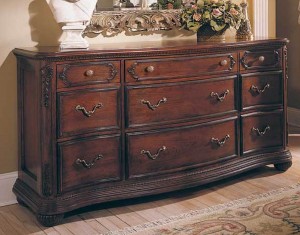
How you finish furniture has everything to do with how it will ultimately look as well as how long it will last.
Naturally, some finishes are more durable than others while some provide more of an elegant luster to the furniture. The best finish for you will ultimately depend on who will be using it and how often it will be used.
In Furniture Finishes – Part 1, we discussed the features of shellac and varnish.
Part 2 will focus on wax and oils.
While paste wax (think carnauba and beeswax) is traditionally applied to protect other types of wood finishes, it is sometimes applied to bare wood as a finish.
Direct application is only recommended for tight, close-grained hardwoods like maple. Before applying directly, ensure that the wood has been sanded as smooth as possible. Colors are sometimes added to wax when it is going to be used as a direct finish.
This helps offset the appearance of blotchy woods, but it does not permanently stain the wood in any way. Wax eventually needs to be reapplied to maintain the desired effect.
Oils, on the other hand, are considered proper finishing substances. Tung oil and linseed oil are known as the “true oils”. These two oils are drying oils and are great for do-it-yourselfers because they are easy to source and typically inexpensive.
The term “true oils” came about to help separate them from other items marketed as oil finishes.
